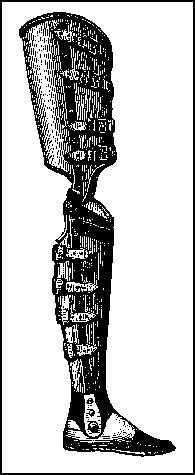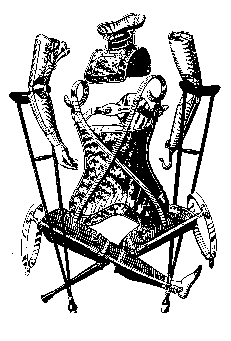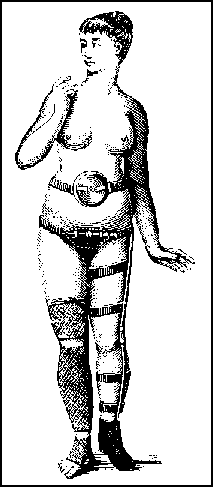And Beyond
The Anatomy
Of a Recovery
Maxine Kumin
(Norton)
 Maxine Kumin lives in Vermont, and has a great fondness for horses and riding. Several years ago, as she was going about in her four-wheeled "marathon" carriage, her horse panicked. Kumin fell out and under the wheels and broke her spine. Inside the Halo is a description of her six months of recovery (as of the writing of the book, she is still weak, but is able to walk and, indeed, at the very end, returns to ride the same horse that nearly killed her).
Maxine Kumin lives in Vermont, and has a great fondness for horses and riding. Several years ago, as she was going about in her four-wheeled "marathon" carriage, her horse panicked. Kumin fell out and under the wheels and broke her spine. Inside the Halo is a description of her six months of recovery (as of the writing of the book, she is still weak, but is able to walk and, indeed, at the very end, returns to ride the same horse that nearly killed her).Over the last twenty-five years, there has been an outpouring of what some call CripLit. This writing is a difficult art, and those who succeed at it must have a fine edge. One must show the pain of loss-of-body without devolving into self-pity, or self-indulgence, or (most dangerous of all), sentimentality. On the other hand, one must beware of a writing style with too much coolness and apparent non-involvement.
There are several writers who have done an excellent job of conveying the truth of it, without falling into any of the traps. One of the most successful was John Callahan, with his bitter but riotous Don't Worry, He Won't Get Far on Foot. Then there was the direct, unflinching style of Hugh Gallagher in Black Bird Fly Away. Of the intellectual school, we have The Body Silent by Robert F. Murphy --- in which he treated his own disability as a study of sociological and psychological truths, being not only a study of himself, but of the effect of his disability on family and friends.
With her background, the story of Kumin's devastating accident should have been one of heart, passion and insight. Alas, it's not so. Outside of the facts of her hospital stay, and descriptions of the agony of rehabilitation, we get long discourses that add little to our comprehension of her days "in the halo." There are tales of family weddings, paragraphs devoted to her and her husband Victor and her daughter Jane and someone named Danny who is "always comforting to travel with." Agreed, family is important to those of us who have gone through such trauma --- because our disability becomes a disability for all of them. But in these writings, one must stay close to the subject, not wander off, as Kumin does, on long descriptions of
grilled fish accompanied by a ratatouille that Scott has assembled from the gifts of my garden...a wonderful medley of onions, potatoes, carrots, parsnips, tomatoes, eggplant, and garlic, drizzled with olive oil and roasted in a hot oven.
Hugh Gallagher once wrote, "Being disabled is no piece of cake." By dwelling on her privileged life, Kumin consciously or unconsciously turns it into a piece of cake and, at the same time, distances herself from others who might find themselves in a similar situation. We don't necessarily expect a writer to give us "The Brighter Side of Being Paralyzed for Life" --- as Callahan did, in his brilliant cartoon series. But with her long descriptions of privileged country living, (the horses, the gardens, her own private lake), Kumin seems intent on letting us know that, despite her appalling accident, she is a practicing member of the New England upper class. It's a hauteur which may be incomprehensible to those who are looking for information or inspiration to guide them through the agony of a body in trauma.

There are several poets whose writings have made it possible for us to learn about intense suffering --- poets such as Anna Akhmatova, Sylvia Plath, Wislawa Szymborska, and Paul Celan ("Black milk of daybreak we drink it at sundown/we drink it at noon in the morning we drink it at night/we drink and we drink it/we dig a grave..."). Kumin, a professional poet, includes here several examples of her writings. One is "In the Rehab Hospital:"
Their wheelchairs are Conestoga wagons drawn
into the arc of a circle at 2 P.M.
Elsie, Gladys, Hazel, Fanny, Dora
whose names were coinage after the First World War
remember their parents tuned to the Fireside Chats,
remember in school being taught to hate the Japs.
They sit attentive as seals awaiting their fish
as the therapist sings out her cheerful directives:
Square the shoulders, lean back, straighten the knee
and lift. Tighten and lift. Up, up and away!...
Is Kumin's poem telling us that in physical therapy, we are virtually at war, that we need to put our chairs in circles to protect us from the "Indians?" Or from the "Japs?" And "Up, up, and away!" Is the trademark of Superman truly appropriate for those of us in rehab? Finally, is the famously disabled FDR speaking to us over the radio, speaking to us "seals," awaiting "our fish?"
For me, these images --- especially the last --- simply don't make it, neither as poetry, nor as a imaginative flight of fancy. It's an unfortunate, almost arrogant piece of doggerel that in no way conveys the good and the bad of sickness and survival.
It might be that Kumin's unempathetic portrait has to do with Narcissus. You remember Narcissus. He fell in love with his own image, as reflected back from a pool, and he had no idea of who was gazing at him so lovingly. He certainly didn't know it was himself. In psychology, narcissistic people are so obsessed with their own persona that they are typically are blind to the pain (and even the pleasures) of those around them. We narcissists typically go into such fields as the arts, acting, writing tart book reviews --- and poetry. In our pursuits, we feel that the whole universe flows in and through and for only us. At the same time, we often fail to recognize what is going on inside the hearts of family, friends and fellow-sufferers. It's a form of psychological blindness that protects us from a great deal of pain. And pleasure. The fact of it is that the pain that came to Maxine Kumin is neither better nor worse than the pain that comes to all of us during the course of our lives. Agony is universal. To be able to convey it, one must have more than just empathy: insight, of course; possibly, too, what might be referred to as a "universal heart." Unfortunately, Kumin seems to lack just that. She may compare herself to an angel or, even, as she does at one point, to Oedipus. She may (and does) drop the fact that she won the Pulitzer prize. Big deal. The difference between the world of the abled and the disabled is huge (to rephrase another famous poet) --- but, at the same time, can be only a tiny step, or even a tiny misstep apart. Every now and again, another Maxine, possibly the real Maxine, peeps through. For example, while in a MRI scan (which terrifies her), one of the poems of A E Housman suddenly, touchingly, pops into her head: the trimeters "thump along with the racketing of the MRI machine, "With rue my heart is laden And once when a particularly chilly physician asks about her accident, she mentions her horse and he replies, "As far as I'm concerned...the only fit place for horses is in an Alpo can." Her response: I am still lying on the examining table and am perfectly positioned to kick this man in the groin. The intravaginal probe still in place restrains me from yielding to the impulse. At last we get a taste of the real Maxine Kumin: tart, snippish, a bit put out by a doctor's appalling insensitivity, but able, at the same time, to turn the mechanical whirring of a scanning machine into a moving poem.
 The more I read her, the more I suspect that Kumin's problem may be beyond her mere membership in the champagne-
The more I read her, the more I suspect that Kumin's problem may be beyond her mere membership in the champagne- Almost everything Kumin tells us about this six-month period is based on the assumption that we are fascinated by her surroundings, her view of world history, her agony --- even the halo that supports her head. (Indeed, the image of "halo" --- a metal circle designed to support the head of the spinal-cord-
Almost everything Kumin tells us about this six-month period is based on the assumption that we are fascinated by her surroundings, her view of world history, her agony --- even the halo that supports her head. (Indeed, the image of "halo" --- a metal circle designed to support the head of the spinal-cord-
For golden friends I had;
For many a rose-lip't maiden
And many a lightfoot lad."